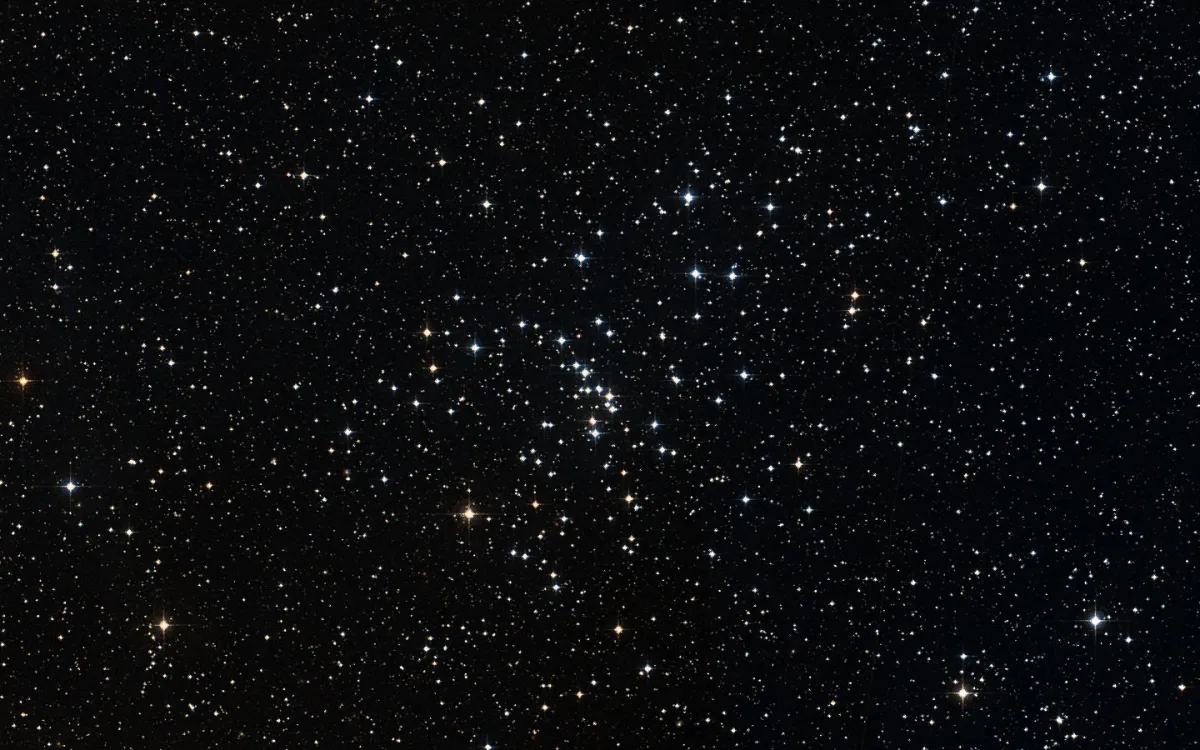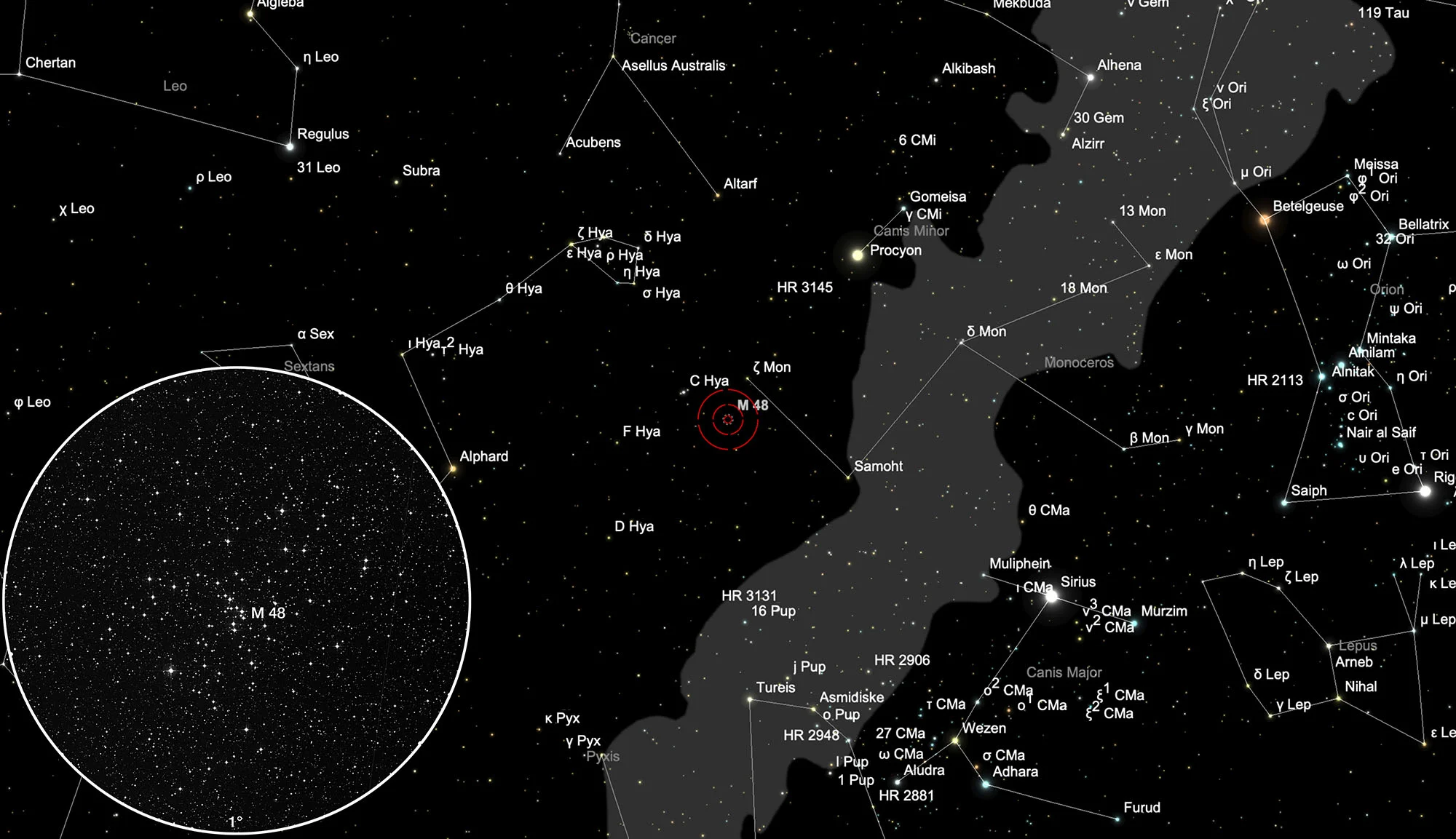Open Cluster Messier 48

History
Charles Messier discovered this star cluster on 19 February 1771 and wrote about it: «Cluster of very small stars, without nebulae; This cluster is not far from the three stars that make up the unicorn's tail». M 48 has long been regarded as one of the mysterious missing Messier numbers, as no star cluster exists at the position given by Charles Messier (today 4° north of NGC 2548). In 1782 the star cluster was discovered again by Johann Bode and in 1783 by Caroline Herschel. Both were disregarded by J. L. E. Dreyer. On the basis of Messier's description there is little doubt that his star cluster is in truth NGC 2548 and that it has a declination of 4°. This flaw was not discovered by Oswald Thomas until 1934, but it was not accepted until someone independently suggested it in 1959. [4, 196]
Physical Properties
This open star cluster is located a bit away from the star-rich region of the Milky Way. It has a somewhat triangular shape and its most distinctive trademark is a central chain of around ten stars from 10th to 11th magnitude. About 50 stars in the cluster are brighter than magnitude 13. M 48 contains three yellow giants of the spectral type G or K. Practically all other stars are A-types of the main sequence. The distance is approximately 769 pc to 789 pc (2508 to 2573 light years). The age is estimated to be around 300 million years. [4, 145, 196]
| Designation | NGC 2548 |
| Type | OCL (I2m) |
| Right Ascension (J2000.0) | 08h 13m 43.1s |
| Declination (J2000.0) | -05° 45' 02" |
| Diameter | 30 arcmin |
| Visual magnitude | 5.8 mag |
| Metric Distance | 0.769 kpc |
| Dreyer Description | Cl, vL, pRi, pmC, st 9…13 |
| Identification, Remarks | WH VI 22; h 496; GC 1637; M 48; OCL 584 |
Finder Chart
The open star cluster M 48 is located in the constellation Monoceros, about 3° southeast of the star ζ Monocerotis. The best observation time is September to June.
